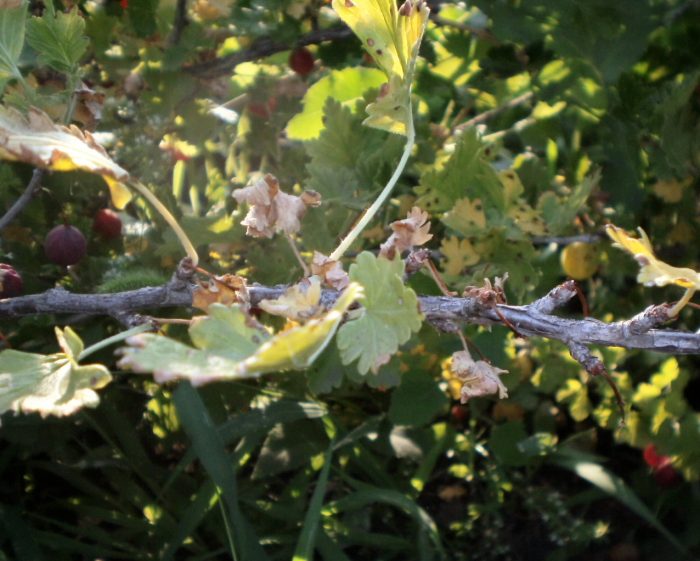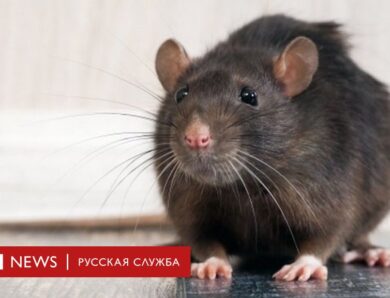
Twisting currant leaves: causes and methods of struggle
Currant leaves are an indicator of her health. Crown with green smooth leaves pleases the eye and creates confidence, that the size and quality of the future harvest will be excellent. But what to do, if the leaves curl and dry out? Immediately diagnose and treat.
reasons for twisting
It is impossible to unambiguously indicate what currants suffer from, after all, twisting the leaves may be evidence of a viral or fungal disease, damage by one of the many pests. A closer look at the plants will help identify others, not so noticeable symptoms, which can more accurately identify the problem.

spider mite
This mite parasitizes many cultivated and weedy plants and is moved by the wind. Its presence can be detected on the inside, which he weaves the thinnest web. It is initially covered with small bright spots, which are gradually increasing. After some time the leaves darken, twist and dry.
glass currant
This is a small butterfly with transparent wings, alternating dark and light stripes on the body, remotely resembles a wasp. She flies through 2 weeks after flowering currants and lays on 50-60 eggs in cracked bark at height 40-70 cm. Across 10-15 days caterpillars appear, are introduced into the trunks and make them long, to 50 cm walk, eating the core. They also spend the winter there. During its life, the caterpillar can damage several shoots, starting with the young and moving on to the more mature. Gooseberry and currant varieties resistant to greenhouses have not yet been bred.
In the initial stage of parasite attack, changes in currants are barely noticeable - slightly smaller leaves and fruits. Next year, when overwintered and mature caterpillars begin to feed heavily, affected branches become visible against the background of healthy leaves during flowering. When removing damaged shoots in the center of the sections are blackened holes.
Currant leafkova galitsa
It's small (close 1,5 mm) a fly from the Gaul family, which appears during the mass flowering of black currants. For 2 days, Components of the period of her life she lays eggs on young leaves at the top of the shoots. Larvae, hatched eating leaves, because of which the tops are curly and die. This pest is especially terrible for young currant plantings.
Currant running Galicia
Unlike sheet, runaway gall hides the masonry in cracks in the bark at the base of the currant branches. Larvae, penetrating deep into the shoots, eat juice, which leads to drying and death of some branches. He is born in the summer 2-3 generation of these pests. Shaded places of growth with high humidity promote their development.
Leaf head aphids
This parasite overwinters in the form of eggs, which lays on the bark around the kidneys on red and white currants. The larvae emerge in the leaf-blooming phase and settle in colonies on the underside of the leaf blades. The leaves are covered with red or yellow protrusions, begin to curl, to perish.
Agrusova shoot aphid
Goose aphid larvae first suck the juice from the buds, then crawl on the leaves and green shoots. The growth of damaged branches slows down, internodes shorten, shapeless lumps of twisted leaves are formed on the tops. Inside, aphids live and breed. Some females are born with wings, due to which these pests easily inhabit neighboring shrubs. In autumn, aphids lay eggs on the bark at the base of the buds and winter until next spring.
How to handle currants
In order to control the above pests, it is necessary to carry out timely pruning, removing all, suspicious, shoots. Remains of leaves and other organic matter in the spring should be carefully removed and burned. Stump circles in late autumn should be dug.
Against aphids, halicas and glass currants before flowering sprayed with a solution of one of the insecticides - Fufanon, Kemifos, spark. They are also used to treat black and red currants after the detection of parasites. If the leaves of the bushes are curled due to spider mites, will help acaricides - Neoron, Doesn't count.
Usually treatment with chemicals is carried out before flowering. Currant, on which the letter is twisted, later it should be treated with biological products or harmless folk remedies.
Video "Currant Disease"
In this video you will learn about currant diseases and how to treat them.


